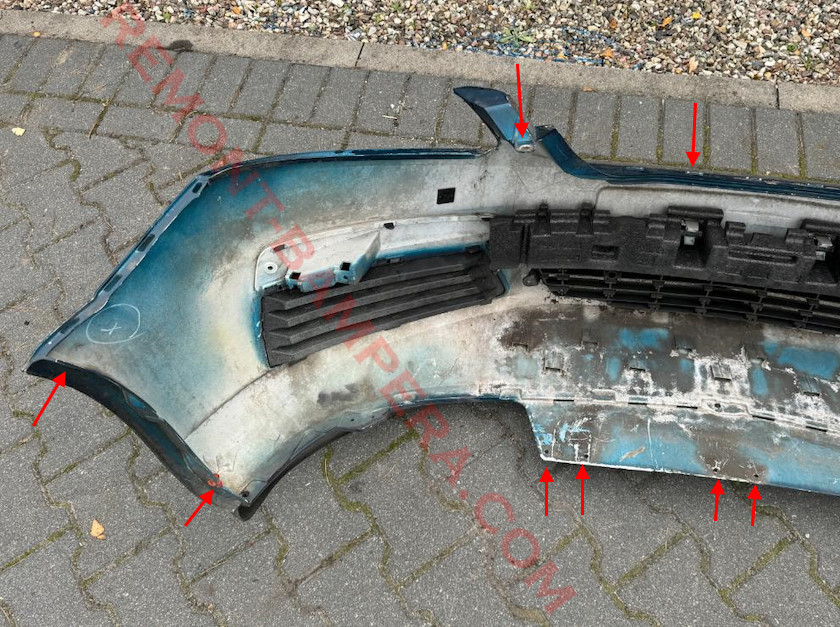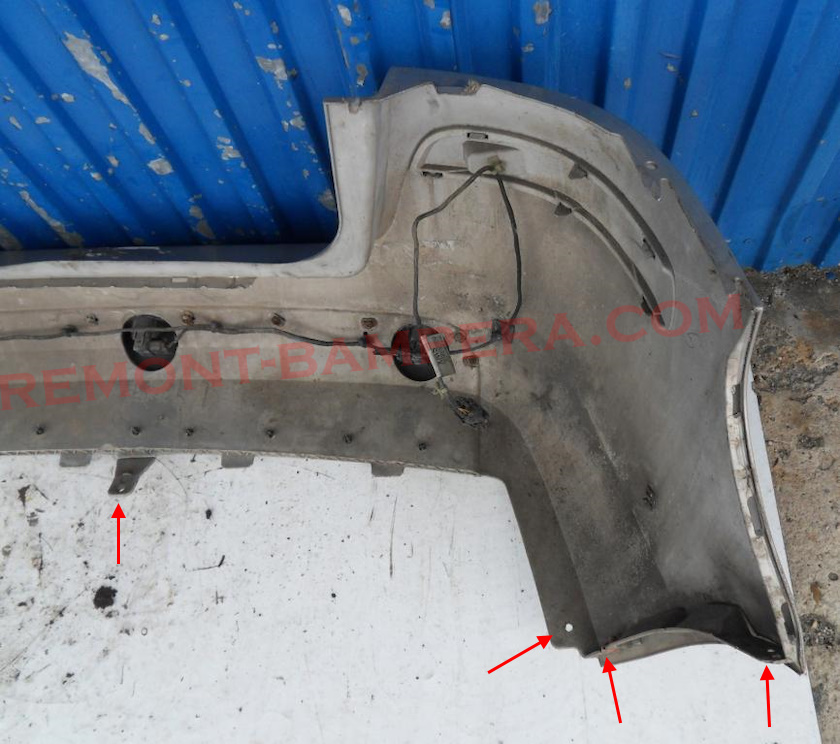Opel Zafira B (2005-2014)
The Opel Zafira B is the second generation of the popular compact MPV from the German manufacturer, which won the hearts of families with its practicality, comfort and well-thought-out design. Produced from 2005 to 2014, during these years the model underwent a facelift, changed several configurations and even had different names in some countries.
What was the Zafira B called in other countries?
While in most countries the model kept the name Opel Zafira, in some regions it was sold under other brands:
- UK, Australia, New Zealand: Vauxhall Zafira (due to using the Vauxhall brand instead of Opel)
- USA and Canada: Saturn Astra TwinTop (though this is a slightly different story as Saturn only offered similar Opel-based models)
- Japan: Chevrolet Nabira (thanks to cooperation with General Motors)
- Interestingly, in South America the Zafira B wasn't widely distributed as Opel was already reducing sales there
Bumper plastic marking: >PP/EPDM-TV20<
How to remove the front bumper
- Open the hood to access the top mounts
- Unscrew the four bolts securing the radiator grille from top to bottom
- Now remove the radiator grille which is attached to the bumper with eight clips
- Pull the grille upward while moving it back and forth
- With the grille removed, unscrew the two bolts underneath and remove the two clips securing the top of the front bumper
- Move to the bottom part: lift the car and unscrew the six bolts under the bumper
- In the wheel arches: unscrew two bolts per side and free the front part of the wheel liners
- Reach the clips in the wheel wells
- Grab the corner of the bumper and pull toward you with moderate force
- (Preferably with assistance) remove the bumper forward, minding the electrical wiring
- Disconnect the electrical components' plugs
- Installation is performed in reverse order


How to remove the rear bumper
- Open the trunk: there are no bolts or clips in the top part of the bumper
- In the rear wheel arches, unscrew two bolts per side
- Since the bolts are very close to the wheels, removal is uncomfortable
- For better access remove the wheels or lift the rear with a jack
- In the bottom part, unscrew two bolts and remove two clips
- Release the clips in the wheel wells and under the taillights (lights don't need removal)
- With assistance, remove the bumper backward
- If parking sensors are installed, disconnect the plug
- Installation is performed in reverse order


2008 facelift: what changed?
In 2008 the Zafira B received updates in design, interior and technology:
- Design: New "Opel Insignia" style grille, redesigned bumpers, LED taillights and modified headlights
- Interior: Improved materials, new instrument cluster with white lighting, updated multimedia system
- Technical changes: New engines including a more economical 1.6L turbodiesel and Start/Stop system for fuel saving
After the facelift the Zafira B looked more modern while retaining its versatility
Model description: why was it popular with families?
The Zafira B was a typical compact MPV, ideal for city and trips. Its key features:
- Flex7 system: 3 seat rows with 2nd and 3rd rows foldable to create an almost flat load area
- Powerful engines: Petrol (1.6, 1.8, 2.0 Turbo) and diesel (1.7 CDTI, 1.9 CDTI) for all preferences
- Handling: Despite its size it behaved almost like a compact car
- Safety: 5 Euro NCAP stars, airbags, stability control
There was also a sport version Zafira OPC (Vauxhall Zafira VXR) with 2.0 Turbo (240HP) accelerating 0-100km/h in 7 seconds
Interesting facts about the Zafira B
- Fire issues: Some models (especially with A/C) had risks due to heating system defects. Opel launched a major recall
- Racing version: The Zafira Cup appeared in 2006 with 200HP and only 1200kg
- Hybrid experiment: In 2011 Opel presented the Zafira Hydrogen 3 (fuel cell) which never entered production
- Last classic: The Zafira B was the last generation of traditional compact MPV before the more compact Zafira C
Conclusion: why do we remember the Zafira B?
It was one of the most successful compact MPVs of its time: practical, spacious but not too large. Although some components had reliability issues, it was a faithful companion for many families. Today it's a classic on the used car market, and a well-maintained example can still provide good service.
If you're looking for a practical but not boring everyday car, the Zafira B remains a good choice. Just check its maintenance history and ensure all "known issues" have been addressed.

 English
English  Italiano
Italiano  Français
Français  русский
русский  Deutsch
Deutsch  Español
Español